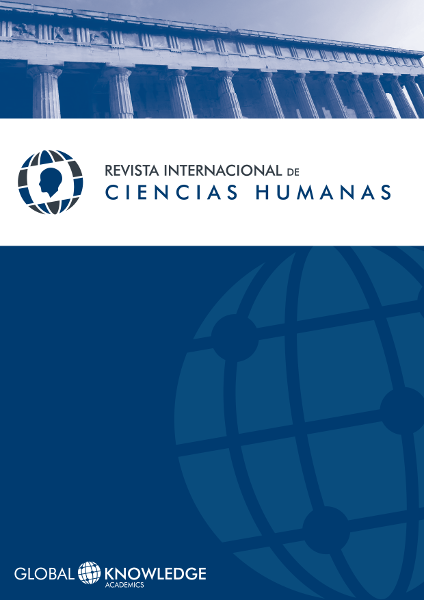As humanidades digitais no cruzamento entre museus e turismo
DOI:
https://doi.org/10.37467/gka-revhuman.v4.748Palabras clave:
humanidades digitais, museologia, turismo criativoResumen
O diálogo entre museu e público enfrenta um desafio cada vez mais premente face ao crescimento do turismo cultural, encarado como atividade de lazer prestigiante, e que, por isso, seleciona alguns destinos de eleição e vota outros ao abandono. Prevêem-se, portanto, novas vias de desenvolvimento agregadas ao turismo criativo, onde o museu se redefine no confronto com as restantes vivências culturais do território. A articulação entre museu e turismo passa pela investigação no domínio das humanidades digitais. A aplicação da tecnologia confere ao visitante competências potenciadoras da experiência museológica para programar a visita, antecipar o conhecimento da coleção e construir um percurso pessoal de acordo com as suas expetativas e vivências e, no espaço museológico, interagir com a exposição, aceder a recursos cognitivos complementares, contextualizar o universo funcional e simbólico do objeto, além de construir memórias futuras que prolonguem a experiência. O museu reassume o papel de mediador de cultura e de espaço de lazer, ao completar o conceito da visita enquanto atividade turística, e ao manter a atualização tecnológica, a par do desenvolvimento do conteúdo cultural que lhe é intrínseco.
Citas
Augé, M. (2000). Non-places : introduction to an anthropology of supermodernity. London: Verso.
Bourriaud, N. (2009a). The radicant. New York: Lukas & Sternberg.
Bourriaud, N. (2009b, June 6). Altermodern explained: manifesto. Tate. Retrieved from http://www.tate.org.uk/whats-on/tate-britain/exhibition/altermodern/explainaltermodern/altermodern-explained-manifesto
CHESS. (2013). CHESS: Cultural Heritage Experiences through Socio-personal Interaction and Storytelling: Project: Concept. Retrieved from http://www.chessexperience.eu/v2/project/concept.html
European Commission. (2014). MEMO/14/162: Bringing mummies to life? New tools to make museums more interactive. Bruxelas. Retrieved from http://europa.eu/rapid/pressrelease_MEMO-14-162_en.htm?locale=EN
Europeana. (2013, June 6). Virtual reality and the museum of the future. Europeana blog. Retrieved from http://blog.europeana.eu/2013/12/virtual-reality-and-the-museum-of-the-future/
Europeana. (2014). The internationalisation of European culture. Europeana professional : Pro blog. Retrieved May 27, 2014, from http://pro.europeana.eu/pro-blog/-/blogs/2014227
Goeldner, C. R., & Ritchie, J. R. B. (2003). Tourism principles, practices, philosophies (9th ed.). Hoboken, N.J.: Wiley. Retrieved from https://archive.org/stream/TourismPrinciplesPracticesAndPhilosophies/TourismConceptPrinciplesPractices#page/n5/mode/1up
Great Britain. DCMS. (2001). Creative industries mapping document, 2001. London. Retrieved from https://www.gov.uk/government/publications/creative-industries-mappingdocuments-2001
Guerreiro, D. M., Calixto, J. A., & Borbinha, J. (2012). Bibliotecas Digitais para as Humanidades: novos desafios e oportunidades. Actas Do Congresso Nacional de Bibliotecários, Arquivistas E Documentalistas. Retrieved from http://www.bad.pt/publicacoes/index.php/congressosbad/article/view/354/pdf
Gyr, U. (2010). The History of Tourism: Structures on the Path to Modernity. European History Online (EGO). Retrieved from http://www.ieg-ego.eu/gyru-2010-en
Hall, S. (1997). Representation: Cultural representations and signifying practices. London [etc.]: Sage.
Hutcheon, L. (2002). The politics of postmodernism (2.nd ed.). London: Routledge.
Indianapolis Museum of Art. (n.d.). ArtBabble. Retrieved from http://www.artbabble.org/about-us
Kirby, A. (2006). The death of postmodernism and beyond. Philosophy Now: A Magazine of Ideas, (58). Retrieved from http://philosophynow.org/issues/58/The_Death_of_Postmodernism_And_Beyond
Kirby, A. (2009). Digimodernism: How new technologies dismantle the postmodern and reconfigure our culture. London: Continuum.
Lyotard, J.-F. (1979). La condition postmoderne: Rapport sur le savoir. Paris: Éditions de Minuit.
McKay, A. (2007). Affective communication: towards the personalisation of a museum exhibition. CoDesign, 3 (Suppl. 1), pp. 163–173. doi:10.1080/15710880701333183
McKercher, B., & Cros, H. du. (2002). Cultural tourism : the partnership between tourism and cultural heritage management. New York: Haworth Hospitality Press.
McKercher, B., & Cros, H. du. (2003). Testing a cultural tourism typology. International Journal of Tourism Research, 5 (1), pp. 45–58. doi:10.1002/jtr.417
Musée du Louvre. (n.d.). Louvre: [Site officiel du musée du Louvre]. Retrieved from http://www.louvre.fr/
Musée du Louvre. (2013). Rapport d’activités 2012. paris. Retrieved from http://www.louvre.fr/sites/default/files/medias/medias_fichiers/fichiers/pdf/louvre-rapportactivites-2012.pdf
Parikka, J. (2012). Archives in media theory: material media archaeology and digital humanities. In D. M. Berry (Ed.), Understanding digital humanities. Houndmills, Basingstoke, Hampshire: Palgrave Macmillan. doi:10.1057/9780230371934
Prado, M. del. (2014). Second Canvas Museo del Prado. Retrieved from https://www.museodelprado.es/app/secondcanvasprado/
Pujol, L., Roussou, M., Poulou, S., Balet, O., Vayanou, M., & Ioannidis, Y. (2012). Personalizing interactive digital storytelling in archaeological museums: the CHESS Project. In Computer Applications and Quantitative Methods in Archaeology (CAA). Southampton. Retrieved from http://www.chessexperience.eu/v2/phocadownload/papers/caa2012_paper_final.pdf
Roque, M. I. R. (2012). O museu de arte perante o desafio da memória. Boletim Do Museu Paraense Emílio Goeldi. Belém: Museu Paraense Emílio Goeldi, 7 (1), pp. 67–85.
The Mad Pixel Factory. (2014). Museo del Prado APP. Second Canvas. Retrieved from http://www.secondcanvas.net/product-tour/museo-del-prado-app-esp/#prettyPhoto
The Metropolitan Museum of Art. (n.d.). Heilbrunn Timeline of Art History. Retrieved May 26, 2014, from http://www.metmuseum.org/toah/
The Metropolitan Museum of Art. (2014). The Collection Online. Retrieved from http://www.metmuseum.org/collection/thecollection-online
UNCTAD, & UNDP. (2008). Creative economy report 2008: The challenge of assessing the creative economy : towards informed policy-making. New York. Retrieved from http://unctad.org/es/Docs/ditc20082cer_en.pdf
UNWTO. (2010). International recommendations for tourism statistics : 2008. New York: United Nations. Retrieved from http://unstats.un.org/unsd/publication/SeriesM/seriesm_83rev1e.pdf
UNWTO. (2013). Panorama OMT del turismo internacional. Madrid. Retrieved from http://dtxtq4w60xqpw.cloudfront.net/sites/all/files/pdf/unwto_highlights13_sp_lr_0.pdf
Villaseñor Ferrer, M. del C. (2007). Building echoes: The role of storytelling in museums and galleries. University of London, London. Retrieved from http://pt.scribd.com/doc/23684958/Building-Echoes-The-role-of-storytelling-in-museumsand-galleries
Descargas
Publicado
Cómo citar
Número
Sección
Licencia
Aquellos autores/as que publiquen con esta revista, aceptan los términos siguientes:
- Los autores/as conservarán los derechos morales sobre la obra y cederán a la revista los derechos comerciales.
- Transcurrido 1 año desde su publicación, la versión del editor pasará a estar en acceso abierto en la web de la editorial, pero la revista mantendrá el copyright de la obra.
- En el caso de que los autores deseen asignar una licencia abierta Creative Commons (CC), podrán solicitarla escribiendo a publishing@eagora.org.








